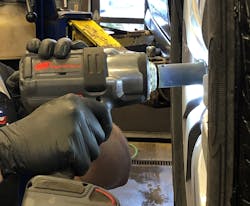This MTD exclusive was provided by tire and auto industry veteran Randy O’Connor, the executive director of TEN (Training and Education Network). He can be reached at roconnor@10missions. com. For more information, see www.mtdten.com.
“Welcome to your first day on the job! As store manager, your annual salary is $60,000, plus 5% commission on net profit. You’ll receive a solid benefit package - including medical, dental and vision - as well as 401(k) and optional life insurance.
“The store you’ll be in charge of is a $2.1 million location at 5% net. We’ll give you an additional $5,000 in annual salary for every 2.5% net increase. Your goal for the coming year is to achieve 7.5% net. Now for the big question - how much will you cost our business this year?”
As a dealership owner, hopefully you provide your team members with a full, printed, monetized run-down of their positions’ benefit packages - outlining your total investment in them as a team member. But we’ll save that conversation for another day. The costs that we’ll discuss in this column are much less tangible, highly behavior-based and often misunderstood.
As an owner, you likely project incremental annual increases based on your historicals and what you know lies ahead. Your budgets are built accordingly. Store-level associates, especially those who are new to the game, aren’t privy to the same information and thus probably aren’t aligned with net-based thinking. That’s why closing the knowledge gap between your business goals and your team’s daily activities is key.
Fortunately, there’s a simple formula that will shape behavior to improve performance and provide your team members the insight they need to have in order to succeed.
Let’s say that your customer service team gives out $10 oil change coupons five times daily. (These are discretionary discounts - not a part of your marketing campaigns.) They’ve done this for years and customers continue to return. It’s only $50, right? Wrong. At 5% net, you would need an additional $1,000 in sales to break even on these discounts. If you’re open Monday through Friday, these habits will cost $5,000 in sales weekly and $260,000 annually.
The simple process of your customer service team selling from their own back pockets - rather than that of the business - just hit home. And it hurts!
Now let’s consider a more serious example. One of your general service techs rips a side mirror of a customer’s car while backing out of a bay. He feels terrible and you take it in stride, paying an $800 repair bill. It’s only $800, right? Wrong. At 5% net, you’ll need $16,000 in sales to overcome the loss. One simple accident like this each month works out to $192,000 in annual sales shrinkage at 5% net. At that clip, with an average repair order of $300, you will need hundreds of additional customers to overcome the losses. The cost of simple errors can really add up.
Now let’s say your team loses three sales a day because members haven’t truly dialed in their phone sales skills. Maybe you’ve never invested in a system to help them or maybe they simply aren’t using the tools you’ve provided. Either way, that’s three sales a day. Let’s also assume you’re producing well and your average repair order is $300. That’s $900 in lost sales each day. Being open Monday through Friday, you’re losing $5,400 weekly and $280,000 annually. I’ll let you do the math on the number of customers needed to overcome this loss. It’s not pretty.
Hopefully, by this point, the simple, true cost of our daily behaviors - or lack thereof - has begun to set in. You owe it to your team members to make sure they have the tools they need to achieve their goals.
Understanding the ins and outs of daily wins and losses is a part of that toolbox. With every member of your team understanding that the cost of a loss or error divided by your net percent is the true cost to your business, you’ll be in a much better position tomorrow than today.
Providing your store managers with these insights might make them a bit nervous, but that’s OK. They should be. Explaining the true cost of daily behaviors to your team will make a massive difference and help deliver the truly awesome experience that your customers deserve.


